The Complete Guide to Hand-Painted and Canvas Photography Backdrops
Photographers rely on more than just lighting and lenses. One essential tool shaping every composition is the canvas backdrop.
A beautifully textured canvas background does more than just set the scene; it becomes part of the image’s storytelling.
Hand-painted and fabric-based options add character that no digital setting can replicate.
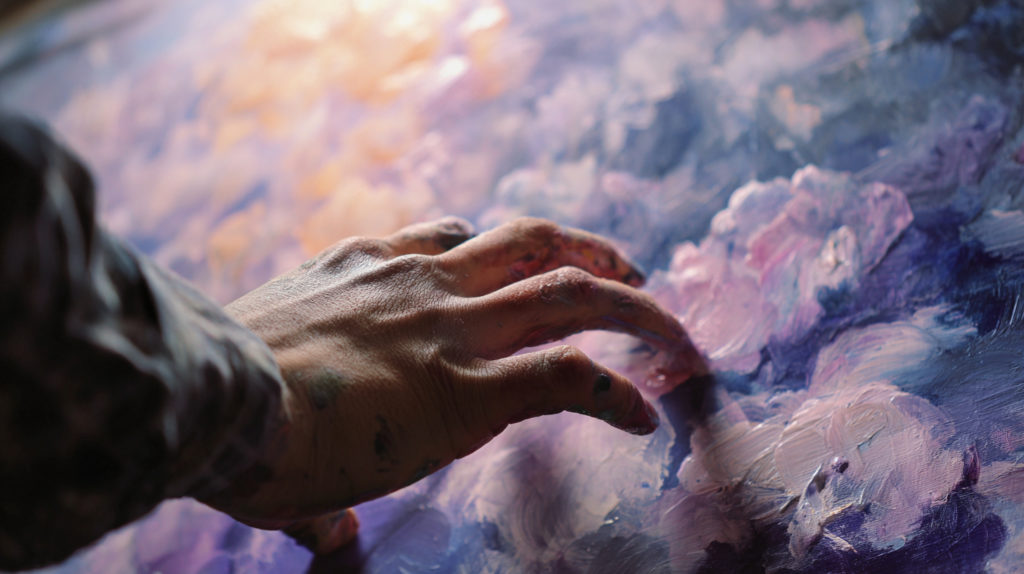
Brush strokes, layered tones, and subtle imperfections contribute to the final image in ways that synthetic backdrops rarely achieve.
Today, we will focus on the practical and creative aspects of using canvas backdrops: materials, painting techniques, comparisons with vinyl and paper, sizing, care, and how to use them effectively in various photography genres.
The Artistic Craft
View this post on Instagram
Hand-painted canvas backdrops have long been used in portrait studios, dating back to the era when photographers relied on artisan-painted backgrounds to infuse their compositions with atmosphere.
While technology has evolved, many high-end studios still rely on the subtle complexity offered by hand-painted canvas.
What makes these canvas backgrounds endure is how paint interacts with the surface. Unlike synthetic options, canvas accepts layers of color in ways that invite texture and realism.
Artists begin by applying a coat of gesso to seal and prime the fabric. Then, acrylic or latex paint is layered using broad brushes, paint rollers, or textured sponges.
Techniques that Create Exceptional Texture
Here are some of the commonest methods used to achieve distinctive finishes:
| Technique | Description |
|---|---|
| Gesso priming | Applied evenly to stiffen and seal the fabric surface |
| Color layering | Multiple hues are gradually brushed or rolled onto the surface to create visual depth |
| Blending and fading | Edges are softened using damp brushes or sponges to avoid hard lines |
| Texture creation | Sponges and dry brushing add irregularities that feel organic and lifelike |
| Aging methods | Some artists apply diluted brown or grey tones around edges to simulate time-worn aesthetics |
Why Photographers Choose Custom Canvas Background
View this post on Instagram
Using a custom canvas backdrop gives photographers more than surface-level variety. It provides a distinct voice that reflects their creative identity.
Through customized tones, textures, and finishes, artists shape the environment behind their subjects with deliberate intent.
Designing or commissioning a backdrop to match a specific palette or mood lets photographers build a visual style that becomes instantly recognizable.
When a studio repeatedly uses one or two signature backdrops, it reinforces that stylistic fingerprint across sessions and clients begin to associate certain visual traits with that photographer’s work.
Each hand-painted backdrop carries brushwork and tonal gradients that no other studio replicates. The interplay between chosen textures, lighting setups, and subject wardrobe is no longer left to chance; it’s designed in advance.
canvas backgrounds in Modern Photography
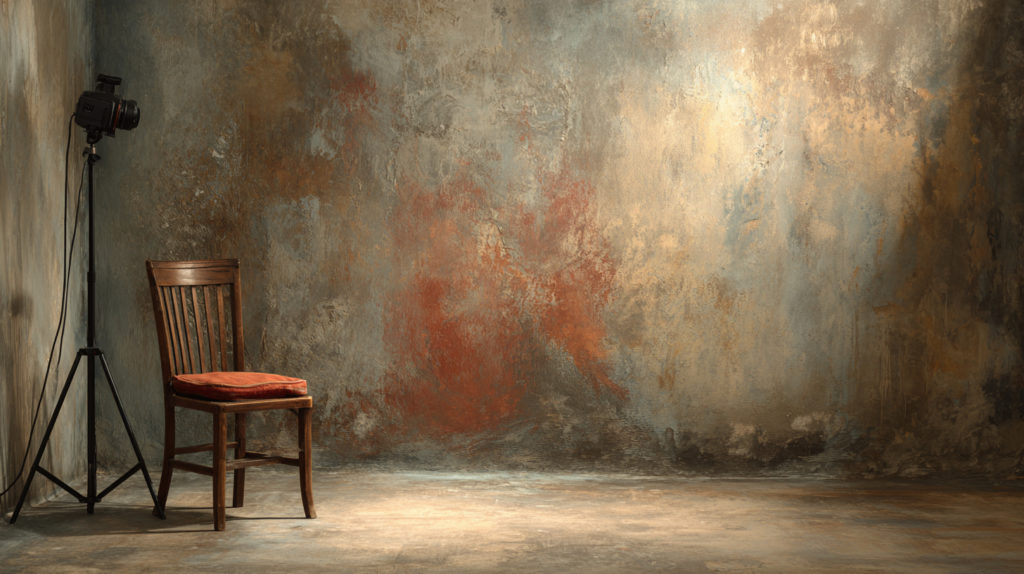
Studios today lean heavily into the canvas backdrop for more than just its traditional aesthetic.
Its performance in high-output environments like commercial sets, fashion shoots, and upscale portrait sessions places it at the top of many professionals’ gear lists.
A textured canvas background adds visual depth that flat backdrops simply cannot replicate, helping the subject command attention with a sense of dimension and natural cohesion.
Materials and Performance Benefits
A key advantage lies in the type of materials used. Artists and photographers often select muslin, heavyweight duck canvas, or primed artist-grade cloth to build their fabric backdrops for photography.
Photographers looking for texture and lighting control should note the following benefits:
- Non-reflective surface allows for precise mood setting in portraiture.
- Natural texture gives an organic finish that enhances subject contrast.
- Paint compatibility enables custom tones, gradients, and layered effects.
Compared with synthetic options, canvas backdrops deliver more atmospheric results. Vinyl may be easier to clean and lighter to carry, but it reflects directional light aggressively, often requiring additional diffusion.
Canvas, by contrast, absorbs and softens those highlights, making it the preferred choice for moody or painterly compositions.
Studio Considerations and Trade-Offs
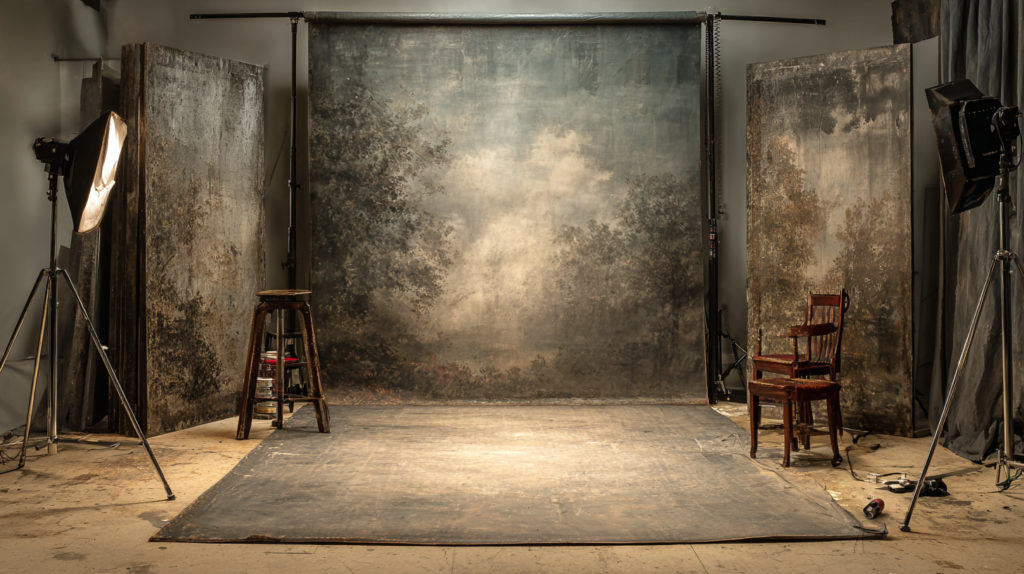
Using canvas does come with a few compromises, but these are often seen as minor when weighed against the visual benefits.
Photographers who work with large-scale sets or need repeatable looks across multiple sessions will find canvas dependable and adaptable.
Key trade-offs include:
- Heavier to transport and install than paper or vinyl.
- Requires proper rolling and climate-controlled storage to preserve paint.
- Demands stable hanging equipment due to its thickness and density.
Despite these factors, many professionals stick with canvas for long-term projects and high-end work.
Its ability to turn flat compositions into textured storytelling tools makes it an irreplaceable part of modern visual production.
In high-end editorial work or commercial branding, a well-crafted canvas backdrop often becomes the element that transforms a good shot into a memorable one.
Improving Visual Branding
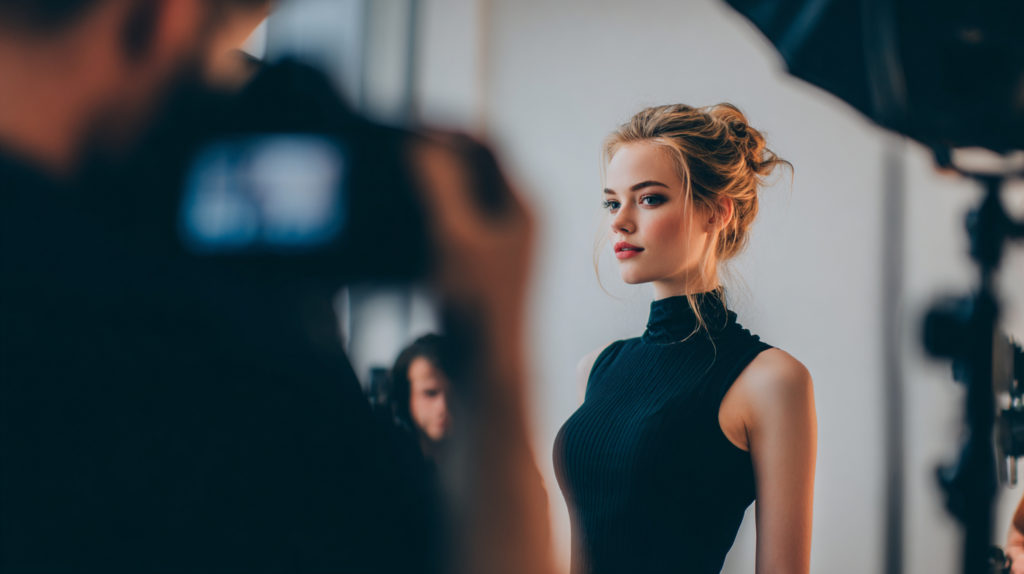
Visual branding demands more than high-resolution sensors and perfect lighting setups. It requires an intentional mood, consistent tonality, and a seamless integration of background and subject.
A professional canvas backdrop serves as a foundational tool for achieving these objectives, especially in high-caliber headshots, stylized product images, and editorial fashion shoots.
Canvas creates depth without distraction. It subtly enhances subject focus by providing a textured, light-absorbing surface that eliminates unwanted glare.
Unlike flat synthetic materials, canvas backgrounds support visual storytelling through layered tones and organic imperfections that digital edits cannot replicate.
To illustrate the advantages, consider the following comparisons:
| Backdrop Type | Characteristics |
|---|---|
| Vinyl Backdrops | Sharp contrast, durable, easy to clean; Ideal for e-commerce; Can reflect under strong lighting. |
| Paper Backdrops | Affordable, disposable, easy to swap; Good for quick sessions; Flat appearance, no texture. |
| Canvas Backdrops | Absorbs light, delivers natural tones; Customizable and artistic; Non-reflective, lighting-friendly. |
Cloth backdrops for photography made from canvas offer more than static functionality. They adapt to the creative environment, capable of being painted over, cropped, or layered with fabrics and set pieces.
For photographers building a studio library, canvas adds long-term value due to its:
- Reusability without degradation.
- Flexibility in format and use-case.
- Compatibility with both analog and digital visual styles.
While vinyl works well in event coverage or pop-up studios where setup speed matters, it lacks the presence and nuance required in branding campaigns.
Choosing a custom canvas backdrop provides photographers with unmatched control over tone, mood, and aesthetic intent.
DIY Tips and Customization
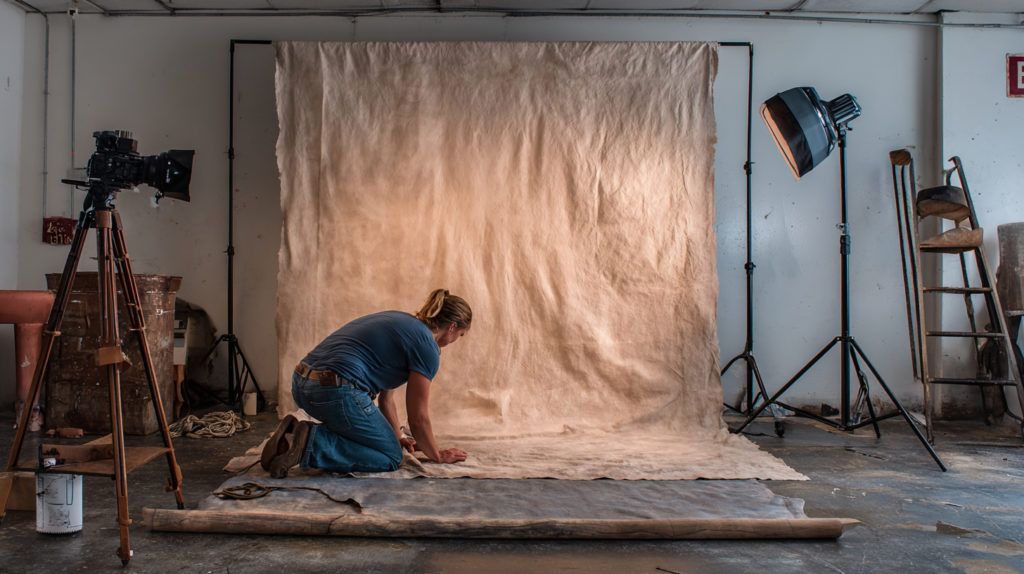
Creating a custom canvas backdrop gives photographers the ability to express visual identity through handcrafted textures and tones. Starting with raw canvas or heavyweight muslin, the process begins by priming the surface with gesso.
Once dry, apply acrylic or latex paints in multiple layers to create depth and character.
Wide brushes, foam rollers, and even kitchen sponges help achieve varied surface effects.
Before painting, mist the canvas lightly with water. This technique prevents harsh brush lines and helps pigment move naturally across the fabric.
Work in manageable sections and allow each layer to partially dry before adding the next.
For a more aged, vintage appearance, blend diluted browns or greys around the edges and corners to simulate natural wear.
To make preparation easier, use a structured supply list to ensure no steps are skipped:
- Heavy-duty canvas backdrop or heavyweight muslin
- Gesso (to prime the surface)
- Acrylic or latex paint
- Large brushes for wide coverage
- Rollers or sponges for texture work
- Water spray bottles for misting and pigment control
- Drop cloths to protect flooring
- Masking tape (for framing or patterning edges)
- Mixing trays or disposable plates for blending colors, likeblue and gray
After painting is complete, allow a minimum of 48 hours for full drying. Once dry, apply a matte clear coat to seal the surface and enhance durability.
Proper storage makes a major difference in preserving the quality of your work.
Always roll the canvas backdrop with the painted side facing out. Folding introduces creases that damage the surface over time.
Standard and Large Canvas Backdrop Options
- Framing
- Light placement
- Subject movement
Studio size and shoot type should guide your decision.
Standard sizes of backdrops include 5×7 ft for headshots and 8×10 ft for portraits or seated poses.
When shooting fashion, group photos, or editorial scenes with motion, a large canvas backdrop, like 10×20 ft, offers more flexibility and drama.
Key advantages of larger backdrops include:
- Room for full-body shots without visible edge interference
- Ability to create layered compositions and richer depth
- Freedom to reframe without cropping out the background
Before purchasing or setting up, measure your studio space.
Ceiling height, lighting distances, and wall width must align with backdrop size.
Always account for:
- Subject distance from backdrop (to reduce shadows)
- Space for lighting modifiers (softboxes, reflectors)
- Need for floor coverage or seamless wall-to-floor transitions
Heavy fabric backdrops for photography require thoughtful hanging systems:
- Crossbars with C-stands for freestanding support
- Wall mounts or roller pulleys for fixed studio installs
- Anchors or cleats for permanent setups
Avoid plastic clips or flimsy pins. These stretch canvas unevenly, creating creases or long-term surface tension.
Investing in stable mounts and proper handling tools preserves your backdrop and protects painted surfaces.
Caring for and Maintaining Your Canvas Backdrops
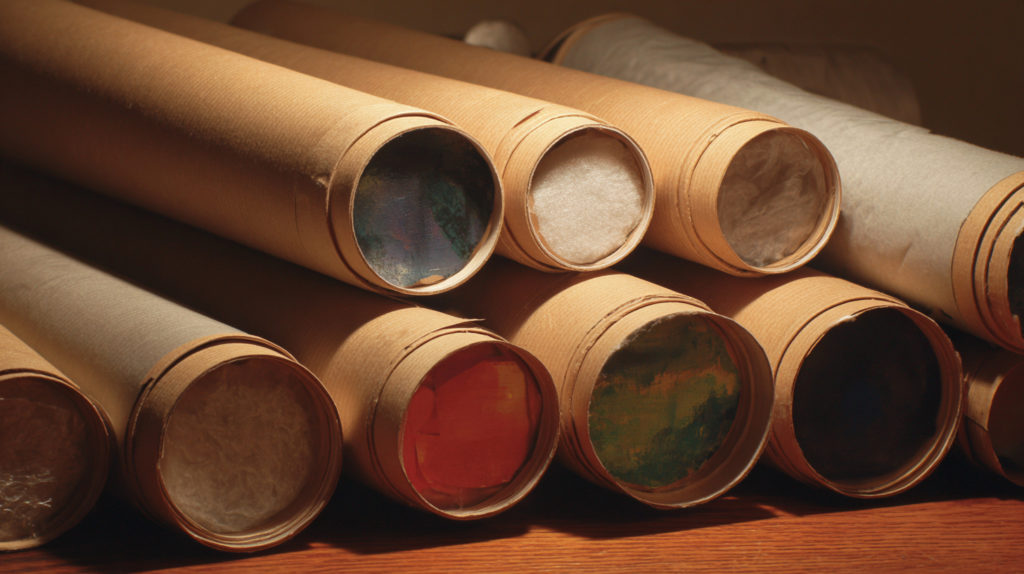
Maintaining photography backdrop ensures that your investment keeps its value over time. Unlike disposable materials, canvas lasts for years if treated right.
To remove light stains or dust, use a damp microfiber cloth, never soak the material. For more stubborn marks, gently dab with diluted vinegar or non-abrasive soap. Do not scrub, as this can pull pigment from painted areas.
Fabric backdrops for photography, especially painted ones, should always be rolled instead of folded. Folding causes stress points and cracks in the painted surface. Use a sturdy tube or PVC pipe for storage.
When rolling custom canvas backdrops, interleave parchment or kraft paper to avoid paint sticking to itself in humid climates.
To fix surface wrinkles, lightly mist the back and gently pull the fabric taut while hanging. A handheld steamer can also help, but keep distance to avoid paint reactivation.
Store in a dry, cool area to prevent mildew and fading. Canvas reacts to light over time, so avoid direct sunlight or intense fluorescent exposure when not in use.
Treat your backdrop like a studio asset, and it will continue enhancing your shoots for years.
Choosing the Right canvas background for Your Photography Niche
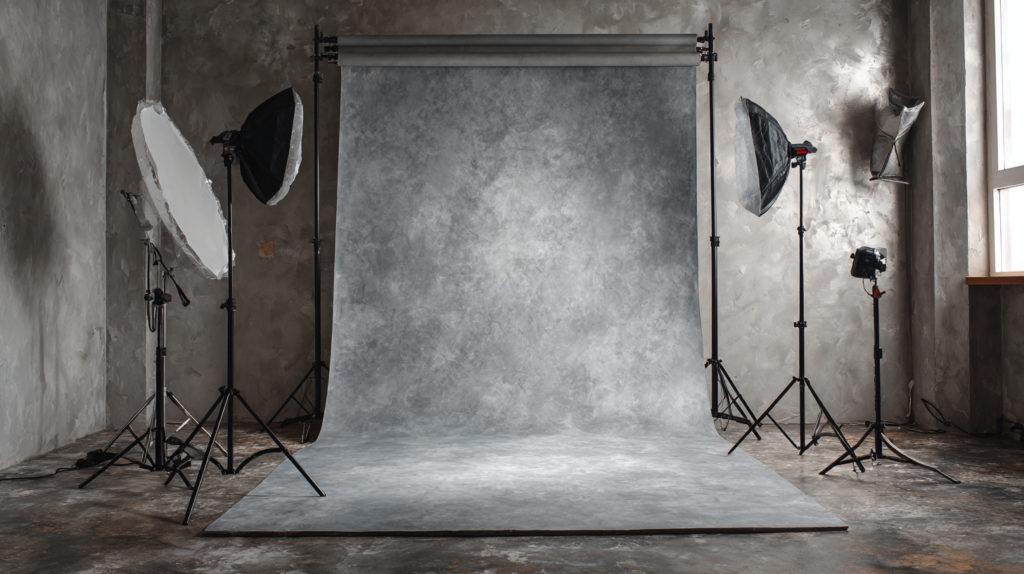
Photographers across specialties gain a creative edge by selecting a canvas backdrop tailored to their style and subject matter.
Portrait sessions benefit from soft, neutral tones that enhance skin tones without overpowering the subject.
Still life work often favors textured earth tones that add subtle visual weight. Fashion photographers frequently lean into dramatic, shadow-rich palettes that make bold clothing and poses more impactful.
When comparing options, cloth backdrops for photography vary widely in texture and durability.
Canvas offers greater tone control, which matters when clients request consistent visual output across multiple shoots.
Backdrops can also influence how a brand is perceived.
To clarify practical choices across genres, consider the following:
| Photography Type | Backdrop Recommendation |
|---|---|
| Portraiture | Warm beige, dusty rose, and pale gray canvas backgrounds that flatter skin tones and emphasize expression. |
| Still life / Food | Muted textures and hand-painted surfaces that frame subjects without distraction. |
| Fashion / Editorial | Larger, multi-toned canvas backdrops suited for full-body shooting and layered lighting. |
| Product Photography | Vinyl works for clean-cut shots, but a custom canvas backdrop adds warmth and visual depth for artisan items. |
Photographers working across genres may benefit from mixing backdrop types. Offering clients both seamless paper and artistic canvas options in the same session allows for more varied galleries. To emphasize this versatility:
- Pair white seamless paper for high-key commercial shots with a textured canvas backdrop for editorial flair.
- Combine muslin for mobility with canvas for studio work where lighting and permanence matter.
- Use solid-colored backdrops for consistency, and painted versions for creative variation.
Final Thoughts
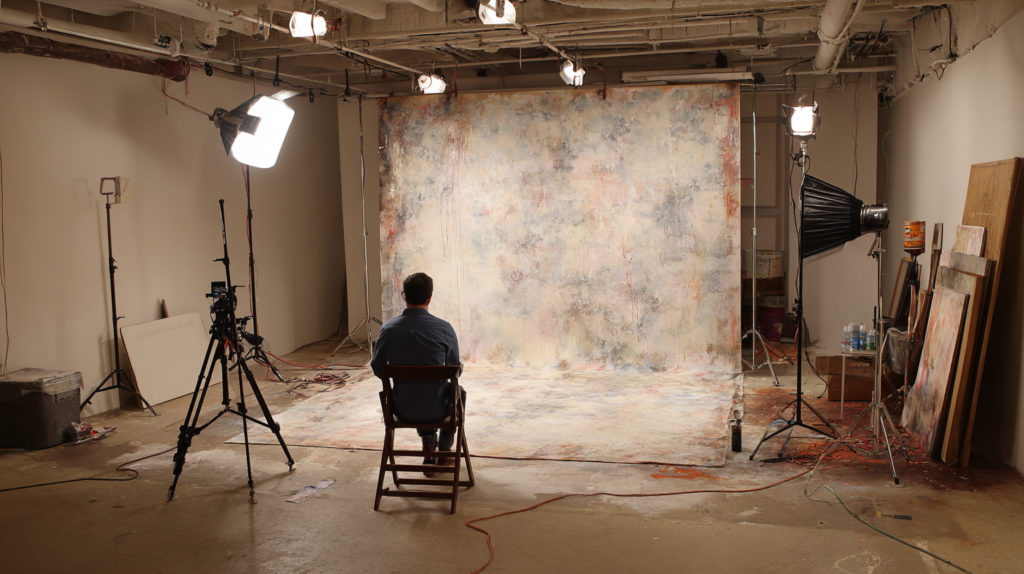
Photographers aiming for distinction and timeless character in their work often turn to the canvas backdrop.
With its tactile depth, light-absorbing surface, and customization options, canvas becomes more than a background.
For those starting out, trying DIY options is a great way to explore. Professionals, on the other hand, benefit from investing in premium, ready-to-use painted backdrops.
Keep them rolled, dry, and sealed, and they’ll continue to support your creative work through years of shooting.

